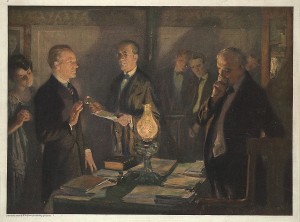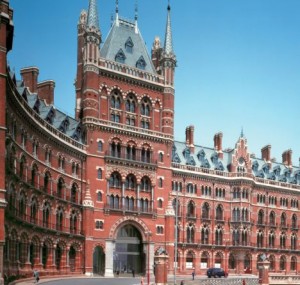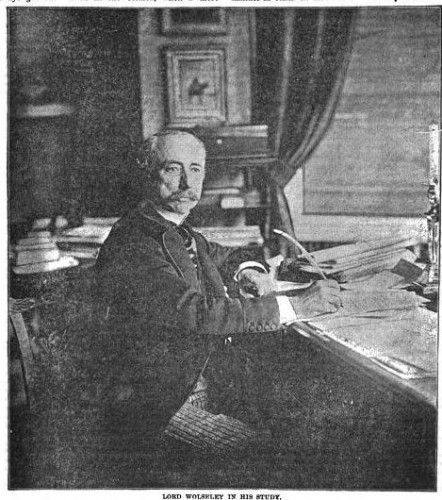Friday, August 2, 1923 was to be Coolidge’s last day of vacation at Plymouth Notch. He had posed for photographs for the small pool of reporters who covered his doings. They had shown him chopping away rot from a maple tree, wearing his suit pants and vest but bowing to the informality of the occasion by removing his suit coat. He had previously worn a woolen smock that had belonged to his grandfather for such chores but, recently, there had been accusations that it was a costume of some sort. He remarked that “In public life it is sometimes necessary in order to appear really natural to be actually artificial.”
The Coolidge family retired early. A telegram from San Francisco conveying the news of the president’s death reached reporters staying in a boarding house in Bridgewater, Vermont. They hastened the eight miles to Plymouth Notch and knocked on the door of John Coolidge’s house. He awakened his son who then dressed and came downstairs. He was informed in a telephone call from his father’s store to Secretary of State Hughes that the oath of office could be administered by a notary. Coolidge returned home and, at 2:47 am, his father administered the oath of office as president.
The nation’s newspapers carried drawings and paintings of the scene the next day. It is still the only instance of a father administering the oath of office of president to his son and of a man taking the oath at home. The house was small and lacked indoor plumbing. It was typical of Coolidge in its lack of pretension and the image was a powerful one to begin his presidency. After the oath was administered, the Coolidges returned to bed, also typical. They arose at 6 am and began the trip back to Washington with a stop at his mother’s grave in a nearby cemetery. These symbols would stand him in good stead when the Harding scandals began to fill the newspapers in the months to come.
Harding’s body was returned to Washington on August 7 where he lay in state in the Capitol. Coolidge issued a proclamation for a day of national mourning and it was apparent that Harding was genuinely liked by the public. The funeral was in Marion, Ohio on August 10.
In 1923, the presidency was very different from what it became under Hoover and Roosevelt. Coolidge greeted White House visitors in person, the last president to do so. He had one secretary and no aides. His telephone was not on his desk but in a nearby booth and unused. He did not know how to drive a car. He had carefully cultivated his image, even to his famous lack of small talk. At a dinner party while vice-president, a woman next to him at the dinner table told him she had a bet with her husband that she could get him to say at least three words. His reply was, “You lose.”


